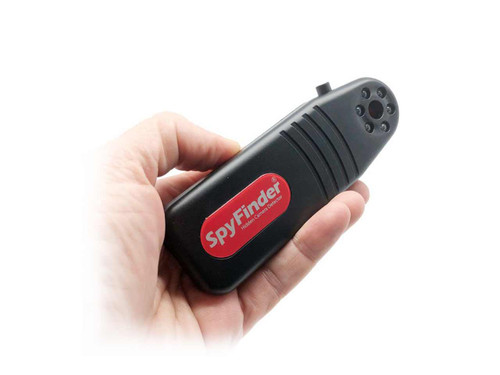Spy Gadgets Grown Up: Next Level of Investigative Tools
A history of how far spy gear has come, and where we may be headed
The history of spy gear goes back nearly a century, to when WWI soldiers searched for unique ways to conceal weapons. From pistols hidden in tobacco pipes and pennies with fold-out blades, the idea of making something clandestine in order to guard its true intention is as old as modern warfare itself.
Of course, when most people think of spy gadgets, they think of Cold War espionage and James Bond novels and films. With the Cold War came a new age of spy activity and information gathering, coupled with technological advances that made cameras both portable and easily concealed in a number of everyday objects. Spy cameras could be hidden in watering cans or bras, and listening devices or bugs could be built into shoe heels. Weaponry had the same clandestine design, with single-shot 4.5mm pistols hidden in a lipstick cases, for example.
Spy gadgets would also vary by country. So as technology became more pervasive, every Cold War faction could develop their own brand of espionage tools. The 1950s to the 1980s saw spy gear development from all corners of the world: the US, Germany, and Russia being the big three.
From the War Zone to the Home Front
By the close of the 1980s, the Cold War was ostensibly over, marked by the collapse of the Soviet Union. Even after the Cold War, however, the idea of spy gadgets and espionage technology was firmly rooted in the imaginations of many Americans. The James Bond franchise, as well as other films and TV shows, helped push a curiosity about spy gadgets to the public, though outside of some speciality shops, consumer spy tools that people could actually buy were relatively remote. Or, if they could be bought, they were prohibitively expensive.
While technological advances helped to make cameras smaller in the 1990s, the big changes in the spy gadget industry came from where the products were made and how they could be ordered. The 1990s saw a rise in smaller spy shops in the US, spurred by cheaply manufactured goods in China and Korea that could be distributed easily worldwide.
By the mid-to-late 1990s, even more of these spy shops were popping up, though with the spread of the internet, they were taking their businesses online. It was within this industry landscape that BrickHouse Security was founded in 2005.
The state of spy gear in 2005 was little more than a novelty. Many of the cameras were difficult to operate, some required cumbersome wiring configurations, they offered poor image quality, battery lives, and video storage capacities were low, there were no options for remote view video; in short, while they may have looked like interesting spy gadgets, many of their real-world investigative applications were limited. And, with low-quality construction, many of them were built for short life spans.
Spy Tech Moves Towards Investigative Tools
Within the past five years, the state of spy devices has blended the best of all worlds; gear is now made with the consumer in mind, but features high-quality components previously reserved for professional investigative tools.
Take a device as simple as the HD Keychain Video Recorder, for example. When devices like this first hit the market, they were offering low resolution, usually in the 640 x 480 realm. Storage was typically internal, allowing a user to record a couple hours of footage before it was at capacity. Now, the same low-cost device the size of a standard key fob is recording high definition 1280 x 720 resolution video at 30 frames per second and capturing extremely high-resolution photos at 4032 x 3024. Storage is expandable, allowing for up to a 32GB SD card which can store hours of video. And this piece of spy technology is just one example.
The number of form factors (unique enclosures for camera technology) and functions of spy cameras has expanded greatly in the past five years as well. Take the SG Home family of cameras as a perfect example. With more than a dozen form factors ranging from wall clocks, teddy bears and house plants to landscape stones, electrical boxes and bird feeders, there are devices built for both indoor and outdoor security and surveillance. What's more, all of these high-tech devices are built for remote viewing, a feature which has become indispensable to a number of covert recording devices in recent years. As a result, professionals from a number of investigative fields such as retail loss prevention, private investigation, and law enforcement are turning to what were traditionally spy gadgets as real-world solutions to security issues.
Where We Go from Here
If trends continue, spy tech and security gadgets will become much more affordable while providing higher quality service. As we've seen in recent years, even though cameras are getting smaller, the components are continuing to provide the highest quality imaging, large, expandable storages, and increased battery life. The number of form factors are also only limited by the imaginations of the manufacturers. The spy tech components can be built into any enclosure a user can think of, blending into any number of home and business settings.
The convenience of remote viewing and cloud storage will also play an expanded role in the evolution of spy gear. Hidden cameras allowing users to check in on their property directly from their smartphones will only become more seamless and user friendly. And as a result, spy gadgets will continue on their path from being novelty devices for consumers to real-world investigative tools used by leaders in the industry.
Posted by Todd Morris on Jan 24th 2024


